The moon is the closest celestial body to Earth and has been studied by sages, scientists, and stargazers throughout history. One of the most important aspects of this study is determining the distance between Earth and the moon. The ancient Greeks, Egyptians, and Chinese were among the first to attempt these calculations. However, with the advancements in astronomy and space technology, obtaining accurate information about our planet’s natural satellite has become much easier. In this article, we will discuss the various methods used to measure the distance between Earth and the moon.
For information about the color of the moon, please refer to a separate article.
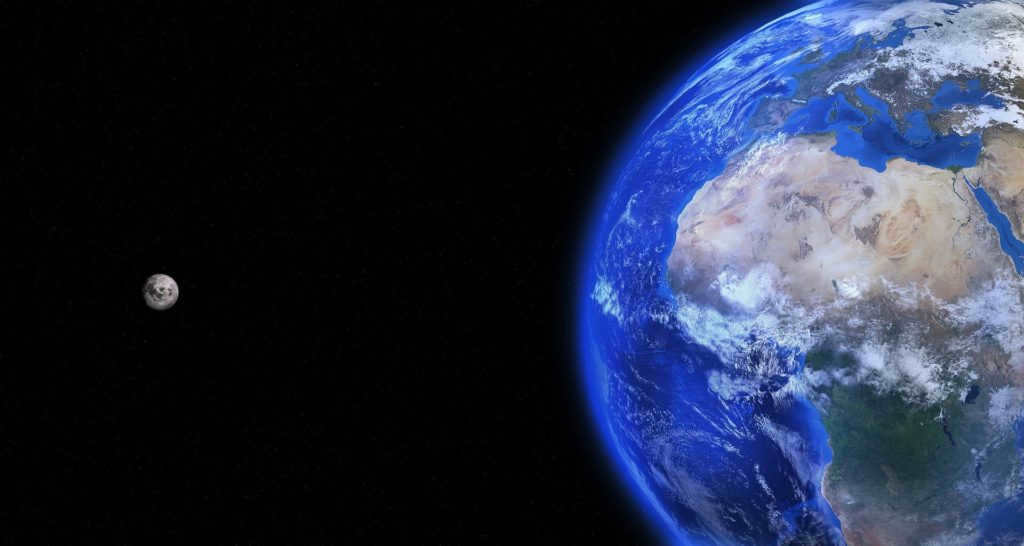
What is the distance from Earth to the Moon?
First and foremost, it should be noted that there is no fixed value indicating the distance between our planet and its satellite. Due to the constant movement of celestial bodies, this measurement varies over time.
Nevertheless, there are two extreme positions that remain relatively constant. The Moon’s farthest distance along its orbit is 405,696 kilometers. This point of maximum distance is called apogee. The point of closest approach between the satellite and the planet is called perigee, with a distance of 363,104 kilometers. Additionally, some sources provide an average distance of 384,400 kilometers.
It should be noted that the distance between these celestial bodies is not a straight line. If you were to travel from the spaceport straight to the Moon, upon arrival it would not be in the same position, as it is constantly moving in its orbit. Therefore, the flight calculations take into consideration the orbital rotation and the projected location of the Moon at the end of the flight duration.
When considering celestial mechanics, the ultimate distance covered by a spacecraft during a flight can vary based on several factors:
- The starting point of the vehicle;
- The position of the Moon in its orbit at the time of launch;
- The number of upper-air orbits;
- The speed of the flight.
All of these elements contribute to the final distance traveled by a specific spacecraft.
Fascinating fact! Arranging all the planets of the solar system in a line would easily fit within the distance between the Earth and the Moon.
What is the distance from the Earth to the Moon
While standing on Earth, the Moon may appear to be quite far away, but this perception is relative. When considering cosmic distances on a universal scale, the value becomes incredibly small. In terms of astronomical units, the distance between the Earth and the Moon is only 0.00257 a.u.
However, despite this seemingly small distance, it is still a significant challenge for modern space technology to overcome. The spacecraft must first be accelerated to a speed of 11 kilometers per second, known as the second space speed. This acceleration allows the spacecraft to break free from the Earth’s gravitational pull. The theoretical calculations suggest that the journey should take around 10 hours at this speed. However, in reality, it is not as straightforward.
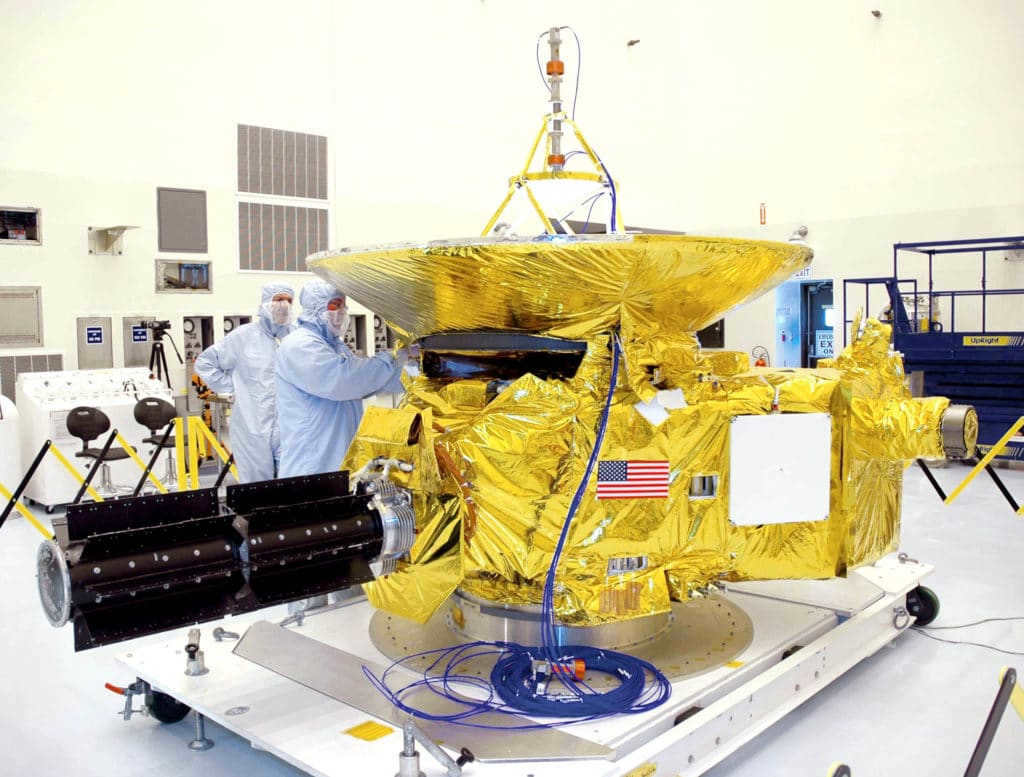
If we’re discussing actual numbers, then according to “NASA,” it took 76 hours for “Apollo 11” to go from launch to landing on the moon. The New Horizons research spacecraft, on the other hand, holds the record for taking 8 hours and 35 minutes from launch at the spaceport to passing by the Moon. It’s important to note that this was a flyby mission and not a landing.
A beam of light can cover the distance between the Earth and the Moon in just 1.255 seconds. If we had spaceships that could travel at the speed of light, the journey would be incredibly fast, but for now, it remains nothing more than a fantasy.
Factors Influencing the Motion of the Moon
The primary factor affecting the motion of the Moon is the absence of a fixed orbital path. This variability can be attributed to the Moon’s relatively small mass and its close proximity to larger celestial bodies with significant gravitational forces. The main contributors to gravitational perturbations are the Earth and the Sun. Additionally, the Moon’s orbit is also influenced by the gravitational pull of other planets within the solar system.
As a result of all these factors, the satellite’s orbit experiences fluctuations in its eccentricity, ranging between 0.04 and 0.07. These variations occur in a regular pattern every 9 years, leading to the occurrence of super moon periods. A super moon is when the full Moon appears larger than usual when viewed from Earth. The most recent instance of maximum proximity between the satellite and our planet was observed in 2016. Subsequently, the next convergence is anticipated to take place in 2025.
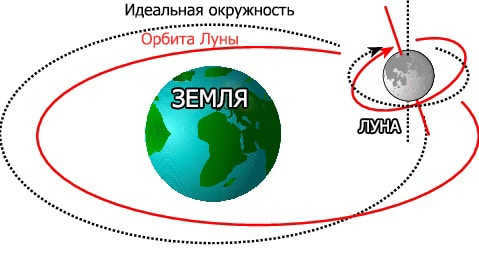
Scientists have observed a regular alteration in the angle at which the satellite’s orbit intersects with the ecliptic. The deviation amounts to 18 angular minutes and these variations occur every 19 years.
Fascinating fact! The gravitational pull exerted by our planet on the satellite is diminishing. As a result, the Moon moves away from us at a rate of 4 centimeters per year.
The distance to the Moon was first calculated by ancient Greek scientists, making it the first space object to have its distance measured. The initial calculations were done by Aristarchus of Samos, who believed that the angle between the Sun and the Moon was 87 degrees. However, this led to an error in his calculations, resulting in the Moon being determined to be only 20 times closer to the Earth than the Sun (with a distance ratio of 1 to 20). It is now understood that the correct angle is 89.8 degrees and the accurate distance ratio is 1 to 400.
The inaccuracies in Aristarchus of Samos’s initial calculations can be attributed to the imprecise measuring tools available during his time. The ancient Greeks observed that during a solar eclipse, the angular sizes of the Moon and the Sun appear to be similar. Based on this observation, it was deduced that the Moon is only 20 times smaller than the Sun. However, in actuality, the Moon is 400 times smaller.
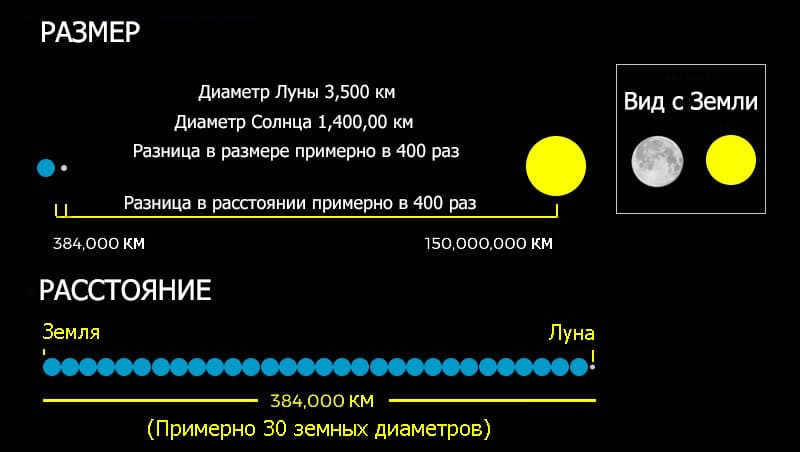
Aristarchus of Samos used the theorem of similarity of rectangular triangles to calculate the distance between the Moon and the Earth. By utilizing geometric equations and data obtained from angular measuring instruments, the ancient Greek astronomer was able to determine that the distance was 509,680 kilometers.
Hipparchus of Nicaea, another astronomer who lived in the 2nd century BC, also attempted to calculate the distance to the Earth’s satellite. He observed the phases and eclipses of the Moon and concluded that it was approximately 382,260 kilometers away.
Although the ancient astronomers’ calculations were not entirely accurate, they provided an approximation of the vast distances in outer space.
What is the cost of traveling from Earth to the Moon using different methods?
It is a common question among individuals who gaze at the Moon to wonder about the time it would take to reach the satellite. The duration of the journey, however, is influenced by factors such as the type of spacecraft, its propulsion system, and the flight trajectory.
Throughout the latter half of the previous century, various advanced space agencies from around the world have dispatched numerous research vehicles to the Moon, each taking a different amount of time to complete the mission. Considering today’s technology and the distance involved, the estimated flight time should be around 10 hours. Nevertheless, these are merely theoretical calculations, with the actual duration being much longer.
- The first man-made spacecraft to successfully land on the lunar surface was the Soviet probe Luna-2. It achieved this remarkable feat in the autumn of 1959, completing its journey in just 38 hours and 30 minutes.
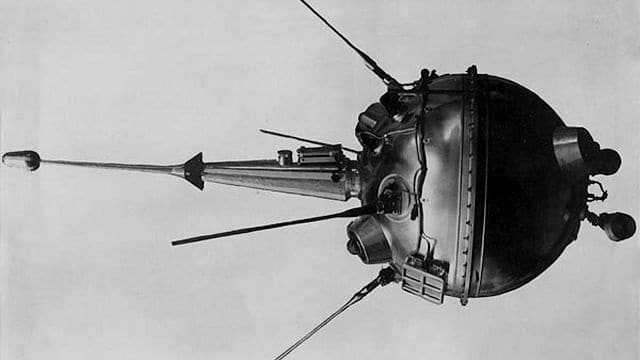
- ESA’s research vehicle SMART-1 holds the record for the longest journey to the Moon, lasting an impressive 410 days. This groundbreaking mission took place in 2003 and was notable for its use of innovative ion engines. Throughout the entire mission, the vehicle consumed a mere 82 kilograms of fuel, setting a new benchmark in efficiency.
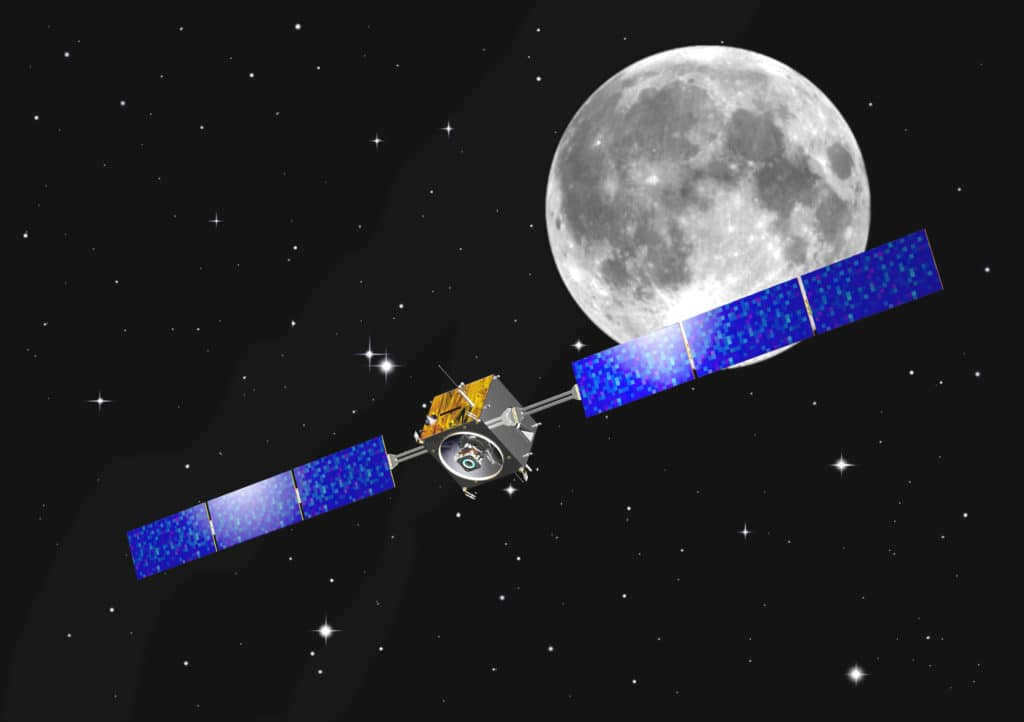
- In terms of human travel to the Moon, as stated by “NASA”, it took the Apollo crews on the Saturn 5 rocket ship a total of 102 hours and 45 minutes. This is the duration it took for Neil Armstrong, Buzz Aldrin, and Michael Collins to launch from Earth and successfully land the lunar module.
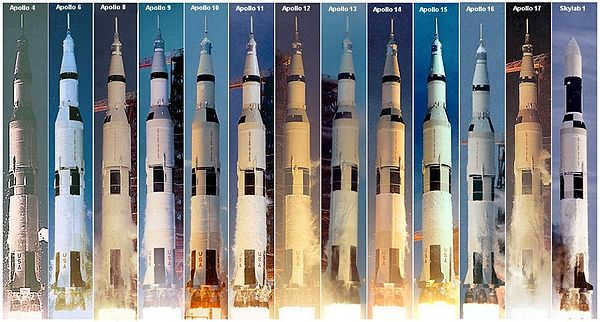
- Chang’e-1, a Chinese research satellite, can reach the Moon in just 5 days. It should be noted that their trajectory is not a straight line, but involves preparation and traveling through Earth’s orbit.
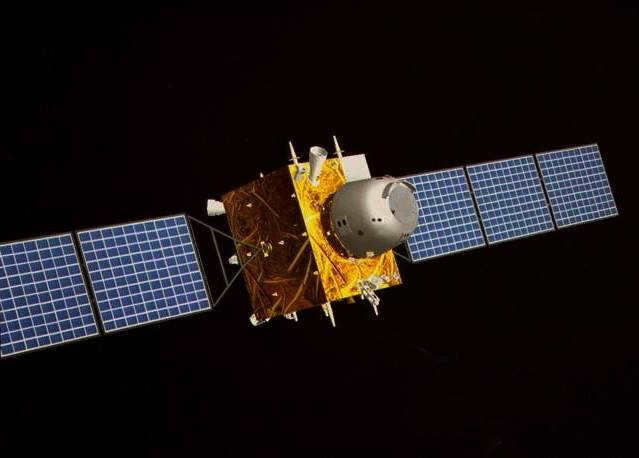
With the continuous advancement of technology and propulsion systems for spacecraft, the duration of space travel can be significantly reduced. However, it is important to note that only American astronauts had the opportunity to land on the Moon through the Apollo program, and that occurred over fifty years ago.
Let’s discuss the distance to the Moon:
- If someone were to walk to the Moon at a constant speed of 5 km/hour, it would require nearly nine years.
- Traveling by bicycle at a speed of 20 km/hour, it would take approximately two years to cover that distance.
- A car journey at a constant speed of 100 km/hour would result in a 160-day trip to reach the Moon.
- If passenger airplanes were able to fly to the Moon, the journey would take approximately twenty days.
Undoubtedly, this serves as a mere demonstration, nevertheless, the data indicates that this is a rather challenging endeavor for both humans and our technological advancements.
Fascinating trivia! Several months prior to the Apollo 8 expedition, turtles, flies, beetles, and plants successfully traversed this very path to reach the Moon aboard the Probe 5 spacecraft.
Overview of Moon Flights
During the early stages of space exploration in the 1950s, the duration of a journey to the Moon was a subject of speculation and theoretical calculations.
In the spring of 1959, the United States launched its first probe to investigate the radiation levels around the Moon. This probe passed within a distance of 60,000 kilometers from the lunar surface. Later that same year, the Soviet Union achieved a significant milestone with the successful landing of their spacecraft, Luna-2, on the Moon. This marked the beginning of lunar exploration. Additionally, in late 1959, the Soviet spacecraft Luna-3 captured and transmitted the first-ever images of the far side of the Moon back to Earth.
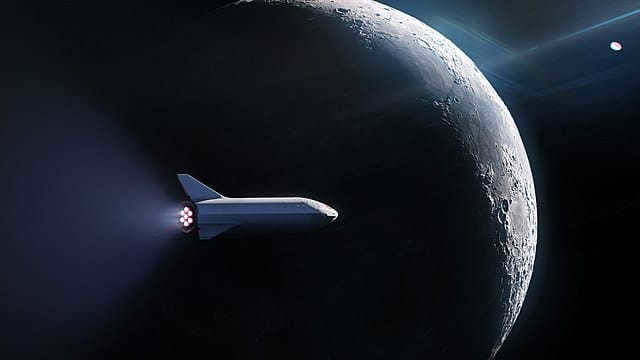
A race for lunar dominance was initiated by both the Soviet Union and the United States. In 1966, after a series of mishaps and setbacks, the Soviet spacecraft Luna-9 successfully accomplished a soft landing on the moon. From then until 1969, approximately 30 additional unmanned missions were conducted. However, in July 1969, the Americans launched Apollo 11 with a crew on board. This marked the first mission in which a human being successfully set foot on the lunar surface and returned to Earth.
Within just 3 years of the Apollo program, there were 6 triumphant landings, with the final one occurring in 1972. Since then, no humans have ever had the opportunity to step foot on the moon. Nevertheless, the launch of lunar rovers and unmanned vehicles has continued, with the purpose of conducting research on this celestial body.
What was the duration of the American flights to the Moon?
The initial American manned mission to the Moon occurred on December 21, 1968. The spacecraft used was Apollo 8, which had a single crew member. The mission involved orbiting the Moon and then returning to Earth. The journey to the Moon took the astronaut 3 days.
The second manned mission, Apollo 10, had 3 astronauts on board. Their objective was to complete the necessary preparations for a lunar landing, without actually landing on the Moon. This mission served as a “dress rehearsal” for the eventual Moon landing. The trip to the Moon lasted 76 hours, while the return journey to Earth took 54 hours.
Regarding the renowned Apollo 11 mission, it took the crew a total of 76 hours to travel from the launch at the spaceport to reaching the lunar orbit. The entire duration of the expedition lasted for 8 days and 3 hours. Subsequent manned flights followed a similar sequence of events.
Fascinating fact! Throughout the entire history of space exploration, a total of 12 individuals have set foot on the surface of the Earth’s natural satellite. Notably, all of these individuals are American astronauts who were part of the Apollo program.
Reasons for the Termination of Moon Flights
In 1969, NASA engineers and designers achieved a groundbreaking feat by creating a flying vehicle capable of transporting astronauts to the Moon and safely back to Earth. However, the Apollo 17 mission in 1972 marked the end of the Moon flight program. Surprisingly, no other country has attempted to replicate the Americans’ achievement. So, why did this happen?
- The USSR, after losing the race for lunar supremacy following Armstrong’s successful mission, decided to suspend its own lunar program. No country wanted to invest significant funds to become second.
- The deteriorating relations between the USA and the USSR led to a diminished focus on outer space superiority.
- Economically speaking, the Moon flights required massive financial investments, with no tangible benefits for humanity from further missions.
- All the required investigation can be carried out by automated stations, which is considerably more cost-effective to maintain.
Indeed, the United States possesses the space technology necessary to reach the moon, but reviving the Apollo program at present would require a minimum of $140 billion. Additionally, the technologies utilized during that era are now outdated and incapable of fulfilling contemporary objectives. Experts assert that it would be more cost-effective to develop a new spacecraft and launch system rather than resurrecting antiquated technologies.
Possibilities of a Future Moon Mission
In the past century, following the conclusion of the Apollo program, space agencies around the world came to the consensus that further manned missions to the Moon were not economically viable or practical. However, with the advancement of technology and the exploration of deep space, the concept of establishing a fully functional lunar base has gained traction. This base would serve as a crucial transfer point for long-distance space travel.
The colonization of other planets is no longer a mere fantasy. One need only consider the relentless efforts of private space agency Elon Musk, which has been diligently working for years on developing a spacecraft for a manned mission to Mars.
“NASA is currently making preparations for an upcoming manned mission as a component of the Artemis initiative. They are once again aiming to make a return to the lunar surface. It is worth mentioning that Russia and China also have their own lunar programs in the works, set to be carried out within the next ten years.

Although we can see the Moon in the night sky (and occasionally during the day), it can be challenging to comprehend its size and distance from Earth.
What is the Moon’s size? Answering this question is not as straightforward as it appears. Similar to Earth, the Moon is not perfectly spherical and has a slightly flattened shape (a flattened sphere). Consequently, the Moon’s diameter from its poles is smaller than its equatorial diameter.
Nevertheless, the variation in size between these two measurements is minimal, amounting to a mere four kilometers. The Moon’s equatorial diameter spans roughly 3476km, while its polar diameter measures 3472km. To put this disparity into perspective, one can envision a comparable expanse, such as that of Australia.
Stretching from one coastline to another
The direct distance between Perth and Brisbane, the two farthest cities in Australia, is 3606 kilometers. This distance represents the entire length of Australia. Therefore, if we were to place Australia and the Moon next to each other, with the Moon’s diameter stretched, their lengths would be approximately equal.
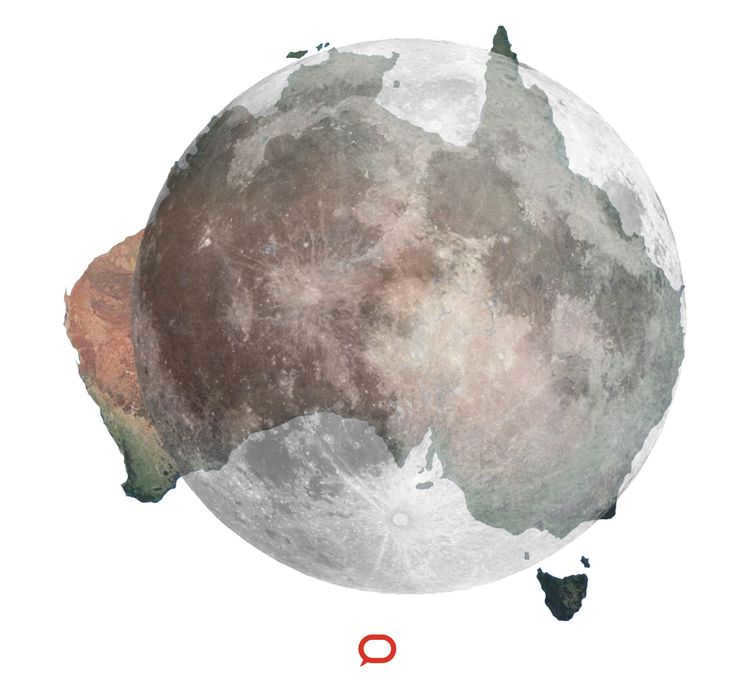
However, it should be noted that this perspective is overly simplistic. While it is true that the Moon shares a similar size to Australia in terms of extent, its actual size is much greater. To put it into perspective, Australia spans approximately 7.69 million square kilometers, whereas the Moon encompasses a vast area of 37.94 million square kilometers, nearly five times the size of Australia.
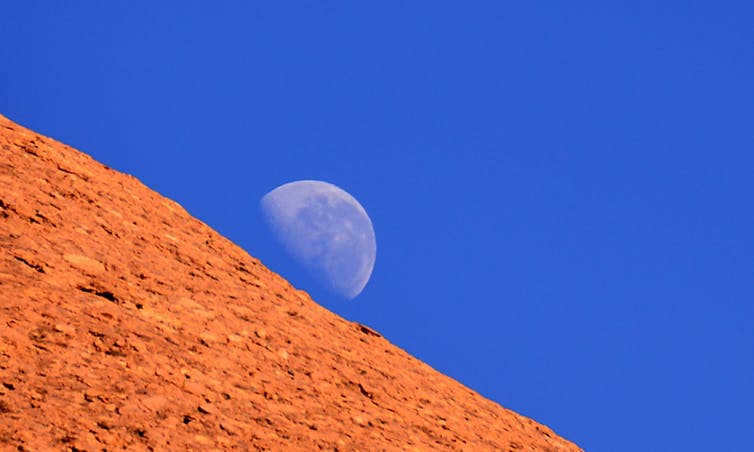

What is the distance to the Moon?
The question of how far away the Moon is may appear more complex than we initially perceive. The Moon orbits the Earth in an elliptical path, causing its distance from our planet to constantly fluctuate. This variance can reach up to 50,000 km, resulting in the Moon’s size in our sky continually changing. Furthermore, the Moon’s orbit is influenced by other celestial objects within the solar system. Additionally, the Moon is gradually moving farther from the Earth due to tidal forces.
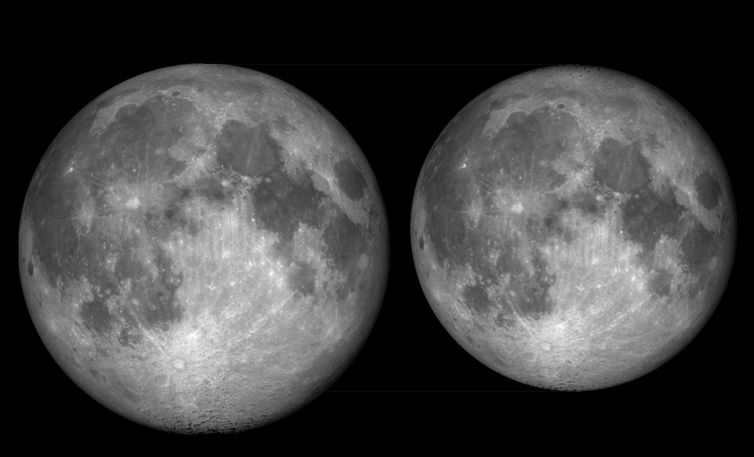

The exploration of the moon was greatly enhanced by the Apollo missions. In 1969, American astronauts landed on the moon and installed mirror reflectors on its surface. These reflectors, which continue to function without the need for external power, enable scientists to accurately measure the distance between the Earth and the moon. By analyzing the time it takes for a laser beam to travel to the moon and back, researchers have determined that the moon is gradually moving away from the Earth at a rate of 38 mm per year or approximately 4 meters per century.
How to reach the Moon
The average distance from Earth to the Moon is 384402 kilometers. Let’s try to put this number into perspective by comparing it to distances on Earth.
If we were to travel by car from Brisbane to Perth, we would have to cover a distance of 4310 km, which would take approximately 46 hours. To cover a distance equivalent to the distance between Earth and the Moon, this journey would need to be repeated over 89 times. It would require five and a half months of non-stop driving, not accounting for traffic congestion or potential accidents.
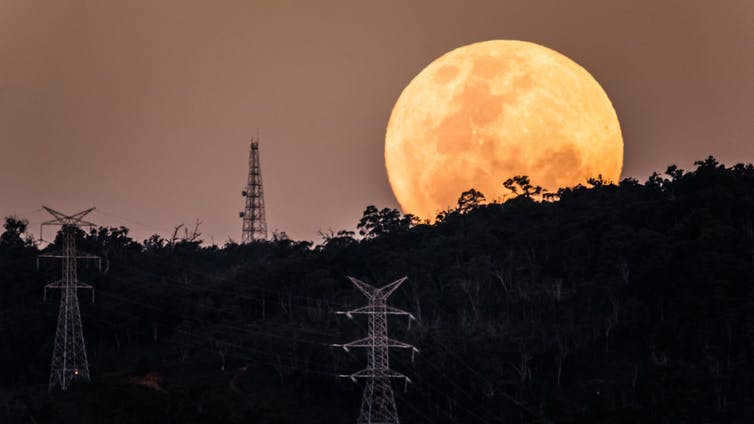
Fortunately, the Apollo 11 astronauts were not constrained by the speed limits in Australia, and in 1969, the Columbia command module successfully reached lunar orbit in just three days and four hours.
Solar eclipse
The Sun has an equatorial diameter of nearly 1.4 million kilometers, which is approximately 400 times the diameter of the Moon. Interestingly, the distance between the Earth and the Sun, which is equal to 149.6 million kilometers, is about 400 times the distance between the Earth and the Moon.
This is the reason why the Moon and the Sun appear to be the same size when observed from Earth. Consequently, when the Moon and the Sun align on the same line as seen from Earth, we are able to witness a fascinating phenomenon – a total eclipse of the Sun.
Regrettably, researchers have determined that solar eclipses on our planet will come to an end in the future. As a result of its increasing distance, the Moon will eventually be too far away to cast a shadow on the Sun. The majority of scientists concur that this eventuality will occur approximately 600 million years from now.
Moonwalkers
Despite the remarkable progress made in space exploration, the Moon remains the solitary cosmic entity that has been graced by the presence of mankind, a feat accomplished half a century ago. As we commemorate the fiftieth anniversary of the initial lunar touchdown, it is sobering to realize that only a mere quartet out of the twelve intrepid explorers who set foot on Earth’s satellite still grace our planet with their presence.
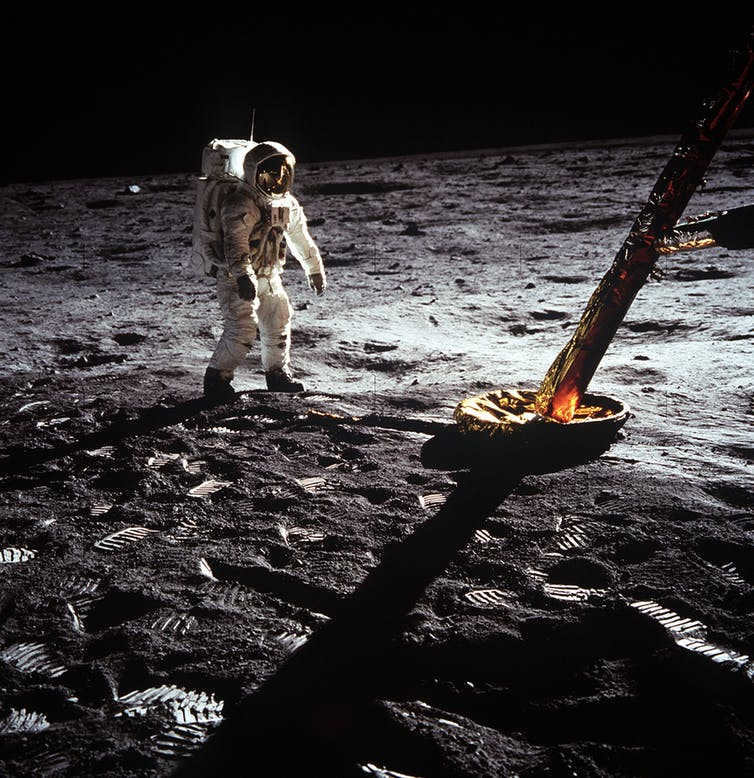

With hopes for the future, mankind will once again set foot on the Moon, igniting the curiosity of a new generation to continue the exploration of our closest celestial companion.
The distance from Earth to the Moon is approximately 384,467 kilometers, and within that vast expanse lies a multitude of wonders waiting to be discovered. Naked Science proposes that we embark on this journey together and witness the marvels that await us.
On the 14th of October, 2012, Felix Baumgartner, an Austrian extreme sportsman and skydiver, embarked on an extraordinary adventure. He ascended to the stratosphere, reaching a staggering altitude of 38,969 meters above sea level, before taking the leap of a lifetime. This was no ordinary jump, and the location from which it occurred was equally remarkable.
In order to reach such heights, Baumgartner relied on a sealed fiberglass capsule, which was securely attached to a helium-filled balloon. This remarkable contraption propelled him to an altitude far surpassing that of any airplane (up to 20 km), and where clouds rarely venture. Even the ozone layer, situated between 20 and 30 kilometers above the Earth’s surface, was left far below in his ascent.
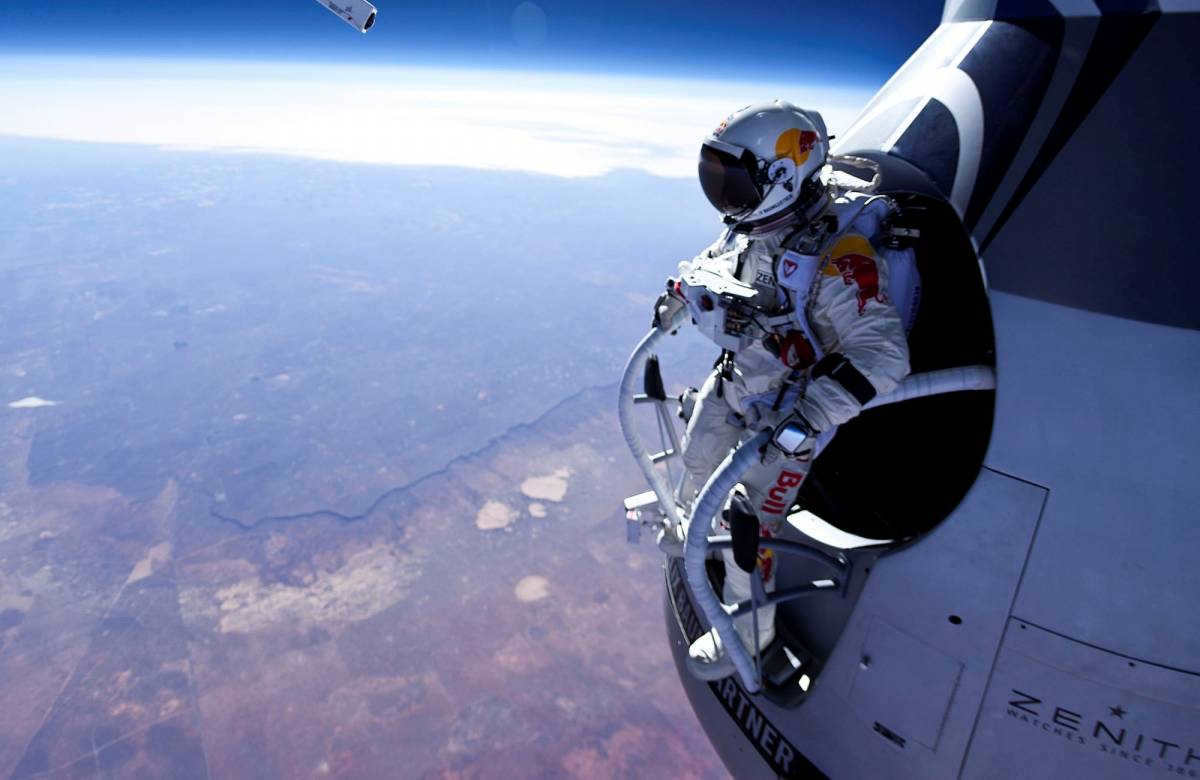
At an elevation of 19 kilometers, the temperature at which water boils is equivalent to the temperature of the human body. As the altitude increases to 35 kilometers, the boiling point of water drops to 0°C. Beyond this point, water is unable to exist in a liquid state. Breathing in this environment without specialized equipment is impossible, and even in the daytime, navigation can be based on the brightness of the stars. This region is known as the stratosphere.
It is almost like being in space, and for some, it may already feel like it. In the near future, the American company World View Enterprises intends to offer tourist trips to the stratosphere. These near-space journeys are being considered as a more affordable alternative to space tourism.
Of course, the stratosphere had been explored prior to Baumgartner’s achievement. The previous record, which stood for nearly 50 years, was set by Soviet parachutist Evgeny Andreev on November 1, 1962. He made a jump from a height of 25.5 kilometers.
Following Baumgartner’s jump by 2 years, on October 24, 2014, Alan Eustace, the vice president of Google, ascended to an even greater height of 41.42 kilometers and executed a jump while utilizing a stabilizing parachute. However, in contrast to Baumgartner’s jump, which garnered over 8 million views on YouTube as it was streamed live, Eustace’s jump failed to generate the same level of interest due to its limited publicity.
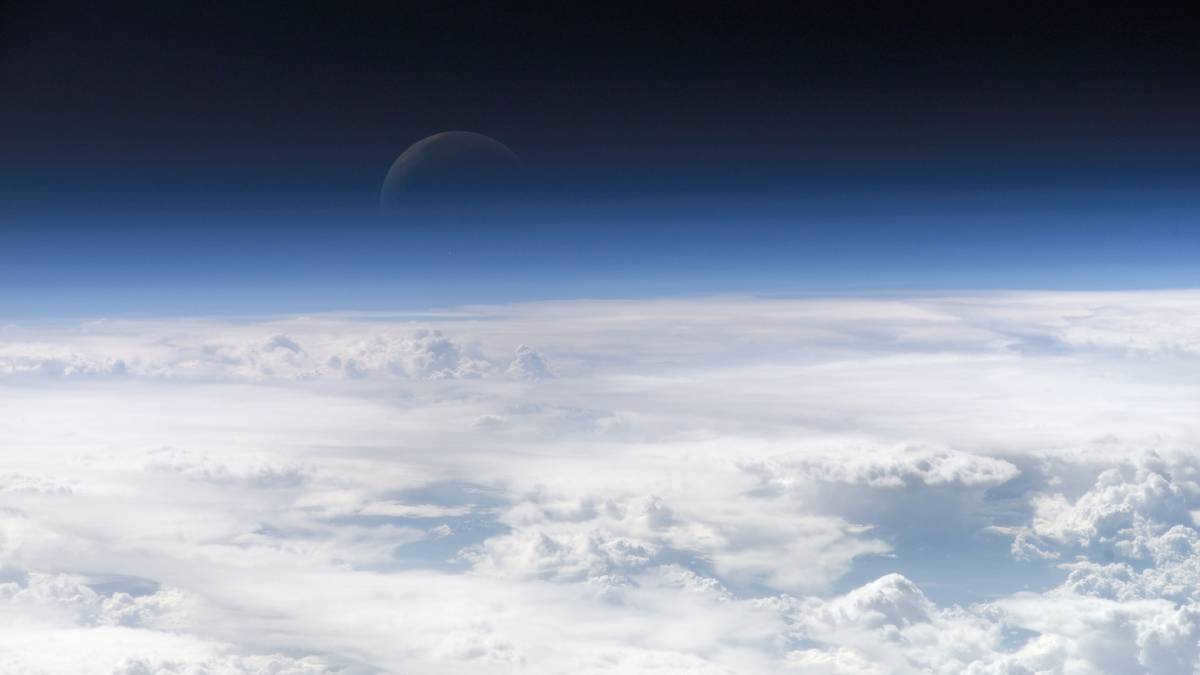
Carman’s distance amounts to 100 kilometers
The point where aviation becomes unfeasible marks the beginning of outer space. Adhering to this concept, the International Aviation Federation designated a theoretical demarcation line between the atmosphere and space at an elevation of 100 kilometers above sea level.
Once an object reaches a certain altitude, using wings for flight becomes impractical. To generate lift and achieve flight, an object must surpass the first cosmic speed, which is 7.9 km/s. However, once this speed is attained, the object enters Earth’s orbit and becomes a satellite. This altitude was originally determined by American scientist Theodore von Karman and was subsequently named after him. Technically, Earth’s atmosphere extends beyond the Karman line, but it becomes extremely sparse and consists mostly of hydrogen atoms.
Traveling to the Karman line and beyond is not possible for conventional aviation. On July 19, 1963, NASA test pilot Joseph Walker reached an altitude of 106 km aboard the hypersonic rocketplane North American X-15. Just a month later, he reached an altitude of 108 km.
Spy satellites start their orbits at a height of 120 kilometers. This low orbit is ideal for conducting visual reconnaissance, as it allows for capturing detailed photos of the Earth’s surface. However, due to the close proximity to the atmosphere, satellites in such orbits have a lifespan that ranges from a few months to a few years.
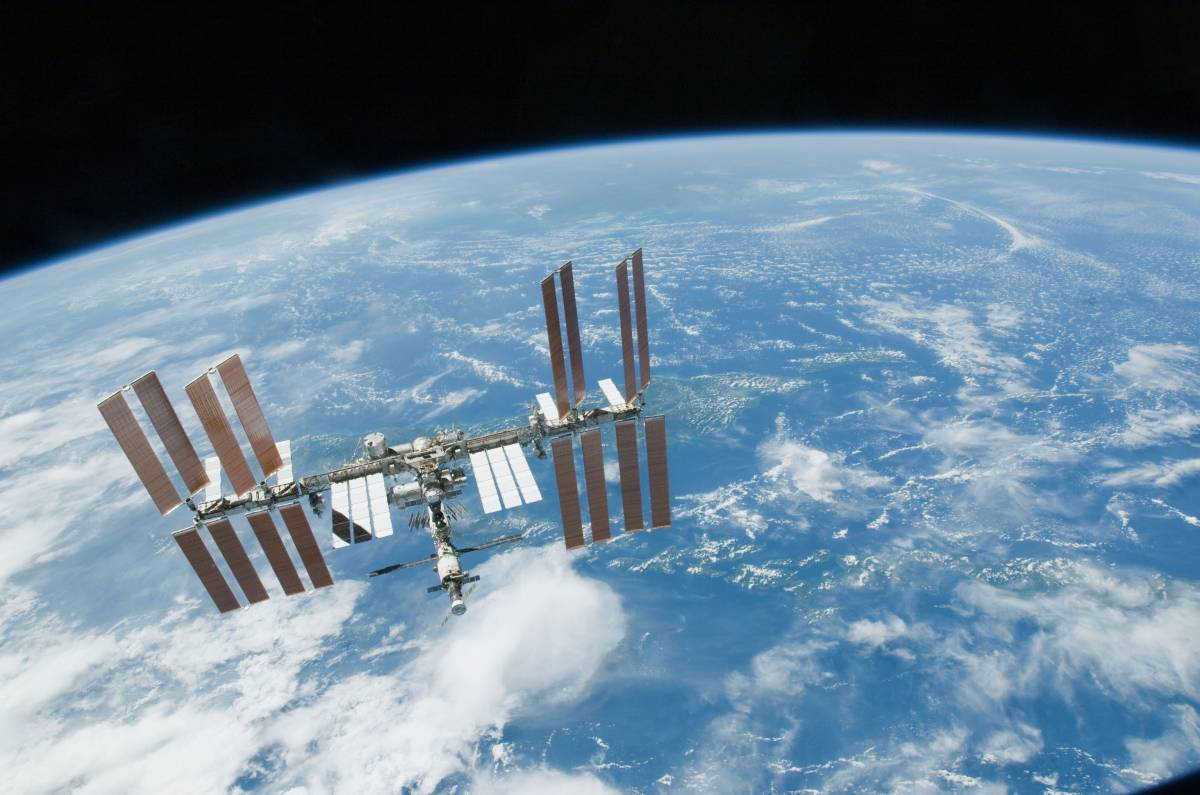
“Habitable Zone” – 200-500 kilometers
The International Space Station orbits at an altitude of 413-418 km, while the Mir station orbits at 354-374 km. On April 19, 1971, the world’s first manned orbital station, “Salyut-1,” was launched into an orbit of 200-222 km.
All orbits fall within the range of 200-500 km. This careful selection is not arbitrary. Raising the manned orbital station any higher would pose significant risks to the cosmonauts due to increased radiation levels beyond 500 kilometers.
On the other hand, going any lower is also not feasible. The space station would encounter atmospheric drag, even though the atmosphere is relatively thin in low orbits, still creating aerodynamic resistance for spacecraft.
Every day, the International Space Station (ISS) experiences a decrease in its orbit height of 150-200 meters. This decrease is caused by atmospheric resistance and the pull of Earth’s gravity. To counteract this decrease, the station’s orbit is raised higher whenever manned and cargo spacecraft visit.
Furthermore, maintaining a higher orbit would be economically disadvantageous as it would result in higher costs for cargo delivery.
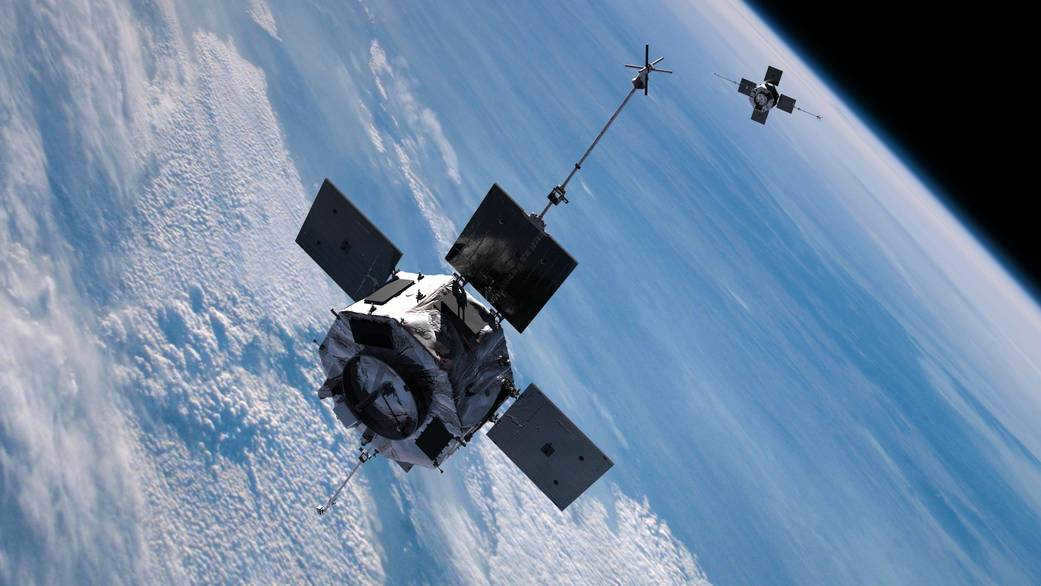
The radiation belt’s lower boundary is situated at a distance of 500 km from Earth
Starting from an altitude of 500 km, the radiation intensity within the radiation belts, which contain electrons and protons from the solar wind captured by our planet’s magnetic field, increases.
These radiation belts were first predicted by Nikola Tesla and were subsequently discovered during the initial space missions.
The radiation belts serve as a protective barrier for our planet, shielding both Earth and the orbital stations positioned in low orbits from cosmic radiation. However, they also pose a significant challenge for space exploration. Astronauts passing through the radiation belts are exposed to high levels of radiation, and if they happen to traverse the belts during solar flares, the consequences can be fatal.
Until now, it was commonly believed that there exist two belts in space. The first belt, found approximately 4,000 kilometers above the Earth, primarily consists of protons.
The second belt, situated at a higher altitude of around 17,000 kilometers, is predominantly composed of electrons. There is a gap between the first and second belts, spanning between 2 and 3 Earth radii. Additionally, the lower boundary of the inner radiation belt is positioned at varying heights above the planet’s surface. Over the Atlantic, the belt can descend to as low as 500 km, while over Indonesia it can reach up to 1300 km.
Recently, NASA made an announcement regarding the discovery of a third radiation belt. This belt is located between the two previously identified belts and appears to have a temporary nature. The Van Allen Probes, a pair of spacecraft launched in August 2012, are responsible for the discovery of this belt.
The Van Allen belts, named after the renowned scientist James Van Allen, are a celestial phenomenon that he is credited with discovering. These belts of radiation encircle the Earth and are commonly referred to by his name in English-speaking countries.
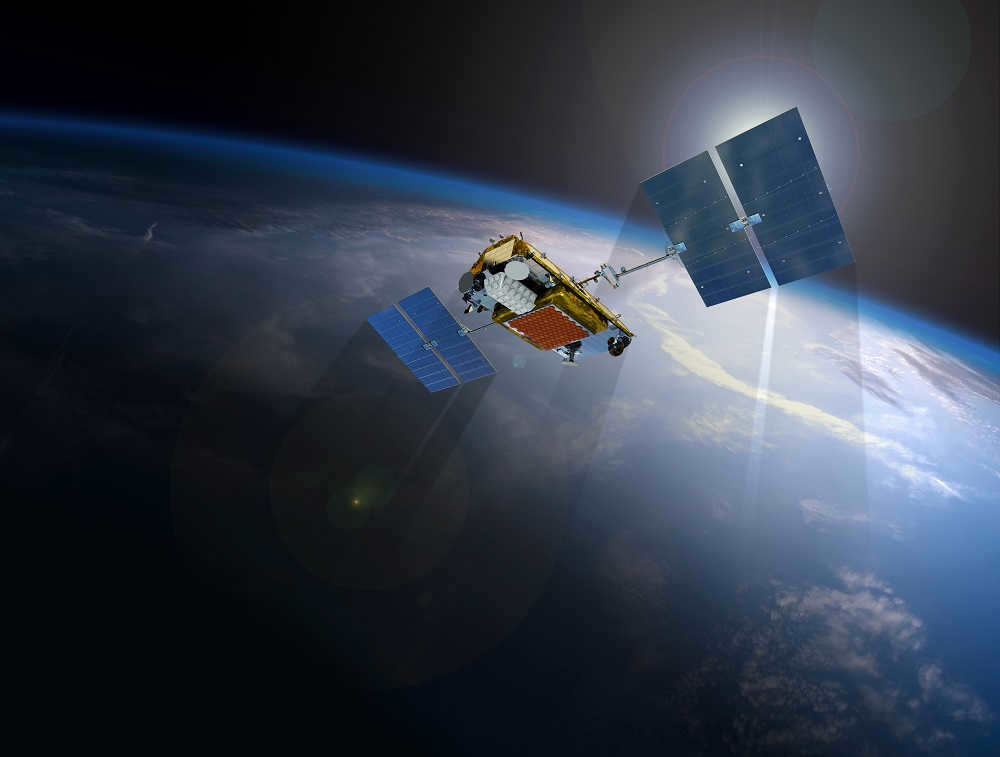
The distance of Iridium’s orbit is 780 kilometers.
When individuals observe a brilliant flash in the nocturnal sky resembling the trail of a shooting star, they often rush to make a wish. However, many already know that it is not a star at all. Numerous individuals worldwide venture outdoors at a specific time to witness what is referred to as the Iridium flash.
The Iridium constellation, a collection of satellites utilized for telephone communication, was established during the 1990s. Originally, the plan was to launch 77 satellites into orbit, and due to the atomic number of the chemical element iridium matching this number, it was decided to name the initiative “Iridium”.
Currently, the constellation has 66 satellites positioned in orbit at an altitude of 780 kilometers. Additionally, there are several spare satellites, known as the orbital reserve, positioned in a 650 kilometer orbit. These spare satellites can be elevated to a higher orbit in the event of a failure of one of the main satellites.
The dazzling flashes observed from Earth are a result of sunlight reflecting off the smooth surfaces of the satellites’ antennas. This creates the appearance of a smooth ascent followed by a gradual fade of the brightest star as it moves across the night sky. These flashes last for less than 10 seconds, but during this brief time, the brightness of the flashed “star” reaches a magnitude of minus eighth. For comparison, Venus has a stellar magnitude of minus 4.6.
It should be mentioned that the Iridium satellites are also notable for being involved in the first ever recorded instance of two spacecraft colliding. On February 10, 2009, the inactive Russian military satellite Cosmos-2251 failed to maintain its orbit and collided with the operational Iridium 33 satellite. This unfortunate incident took place at an altitude of 788.6 kilometers above the Taimyr Peninsula, resulting in the destruction of both spacecraft. The aftermath of the collision left behind approximately 600 fragments, each measuring over five centimeters in size. Although these fragments remain in the same orbit, there is a strong possibility that they will descend at a later time, posing a potential threat to spacecraft in lower orbits, including the International Space Station (ISS).
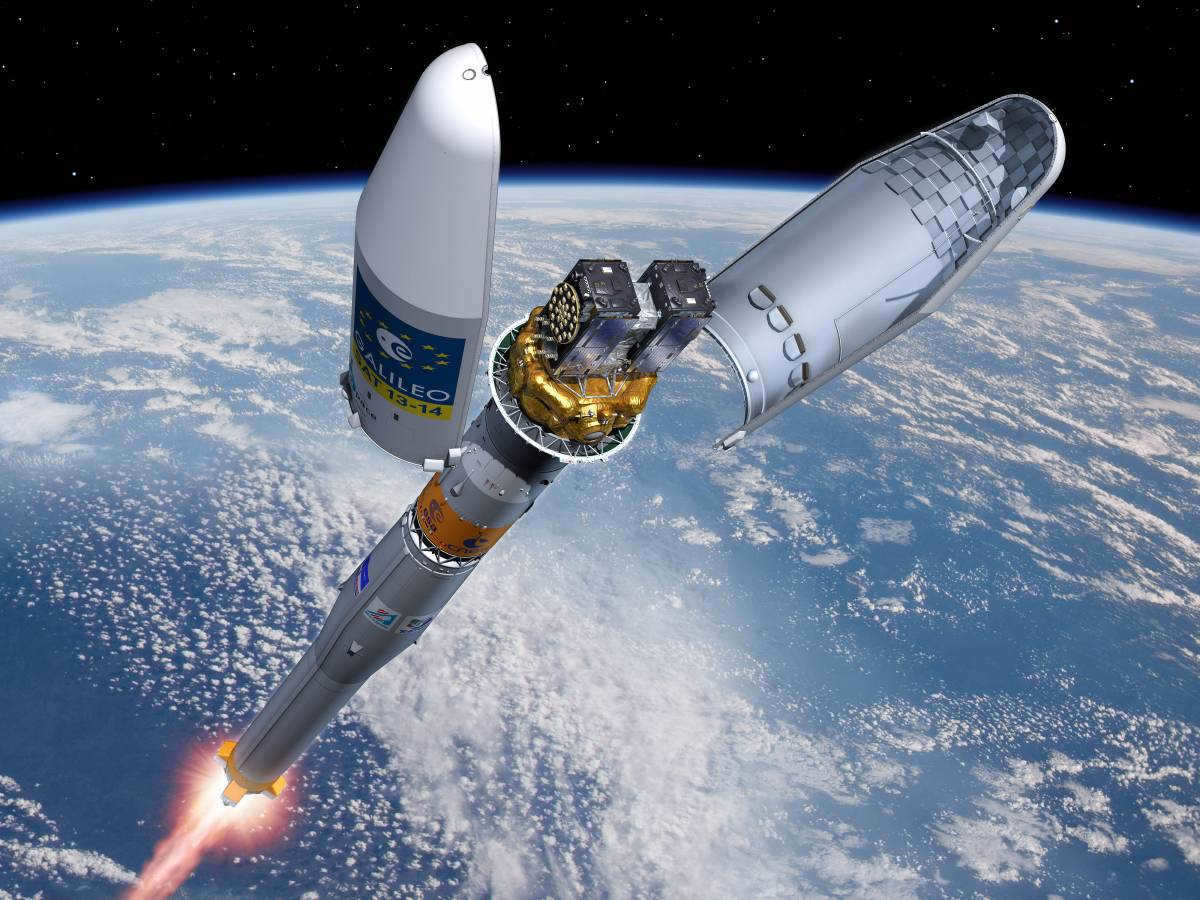
Altitude of Navigation Satellites – 19,400 – 23,222 km
In today’s world, it is difficult to envision life without the convenience of satellite navigation, especially when it comes to driving a car. Initially developed for military purposes, satellite navigation has become an integral part of civilian life across the globe. So, how far above us do these navigation satellites actually operate?
The Russian navigation system GLONASS (Global Navigation Satellite System) boasts the lowest orbit among all other navigation systems, with its satellites positioned approximately 19,400 kilometers above the Earth’s surface.
On the other hand, the American global positioning system GPS (Global Positioning System) positions its satellites slightly higher, at around 20,200 km above us.
Lastly, the European Space Agency launches its satellites to an altitude of 23,222 km.
Several countries are also striving to keep up with the latest technology. After all, having their own system like this is crucial for national security. For example, China is currently constructing its Beidou navigation system. The plan is to position 27 satellites in the medium-Earth orbit, which is approximately 21,528 kilometers above the Earth’s surface. This orbit is strategically located between the orbits of American and European satellites. Additionally, three satellites will be placed in geosynchronous orbit, while five will be in geostationary orbit.
Developing a global navigation system that covers the entire planet is not financially feasible for all countries. Thus, some nations are opting to create their own regional satellite navigation systems.
Japan’s QZSS (Quasi-Zenith Satellite System) is exclusive to Japan. However, the system can be constructed with just three satellites placed in a highly elliptical orbit. It is referred to as quasi-zenithal because this orbit allows the satellite to remain high in the sky for over 12 hours a day, essentially in the zenith position. The apogee altitude is 42,164 km.
In April of this year, India launched the latest satellite for the IRNSS (Indian Regional Navigation Satellite System). India is in the process of building a system consisting of seven satellites in geosynchronous orbit at an altitude of 35,786 kilometers, with three of them being in geostationary orbit.
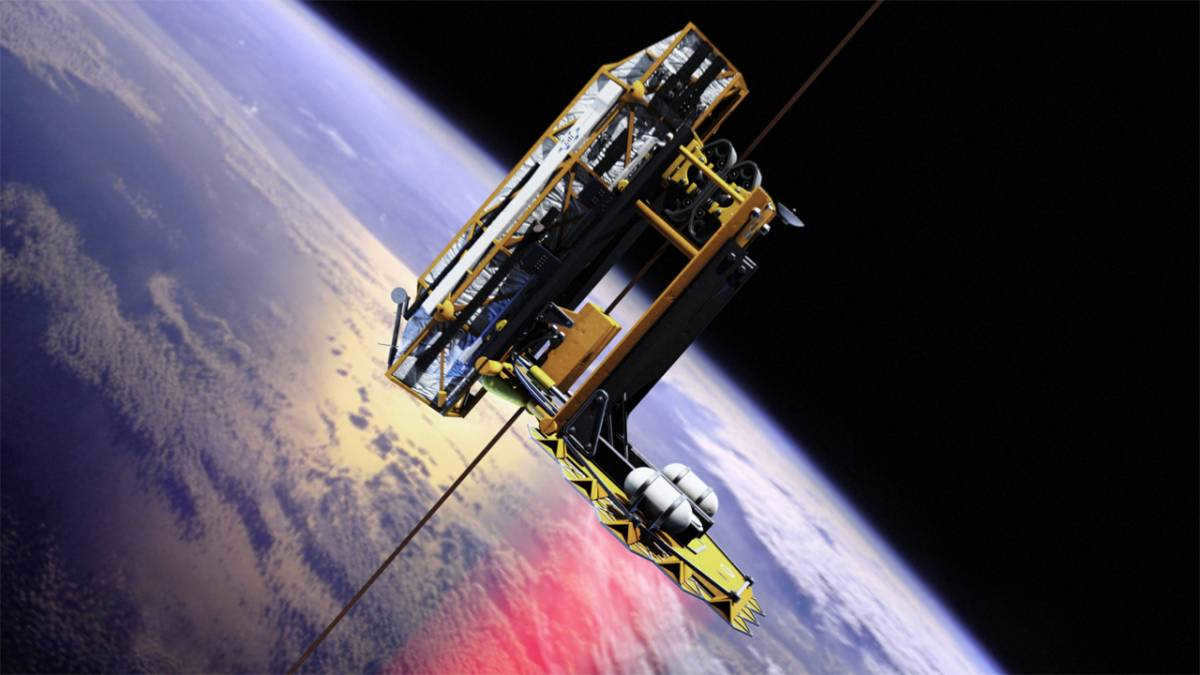
The Geostationary Orbit – Distance of 35,786 kilometers
An orbit of immense practical value to us is the geostationary orbit, which is located at an altitude of 35,786 kilometers above the Earth’s equator. When a satellite is in this orbit, it orbits the Earth at the same angular velocity as our planet’s rotation around its axis. This unique orbit allows the satellite to remain stationary above a specific point on the Earth’s surface.
From the perspective of an observer on Earth, a spacecraft in geostationary orbit appears to be stationary at all times. It is worth noting that satellite television antennas, commonly known as “dishes,” are always pointed towards an invisible arc in the sky that represents the geostationary orbit. This allows multiple antennas from different operators to focus on the same point in space.
This particular orbit is home to a variety of satellites that serve different purposes, such as live television and radio broadcasting, navigation systems, communication satellites, and more. It is worth noting that this orbit is subject to international regulations due to its limited capacity to accommodate satellites without interfering with other spacecraft.
Unlike a “rubber band,” the geostationary orbit does not allow for satellites to simply bounce back. Instead, when satellites have completed their mission, they are moved to a higher orbit using any remaining fuel. This higher orbit, located 200-300 kilometers above the geostationary orbit, is known as a burial orbit. Satellites can remain in this burial orbit for up to 2000 years until a future solution is determined.
The elevator is built upon a cable (or ribbon, depending on the specific project) that is extended from the Earth’s surface to the geostationary orbital station. The elevator will travel along this tether, carrying cargo.
Using this elevator, it will be feasible to reach the geostationary orbit within a week, and at a relatively low cost. However, the development of a cable that is both lightweight and durable enough for this purpose has yet to be achieved.
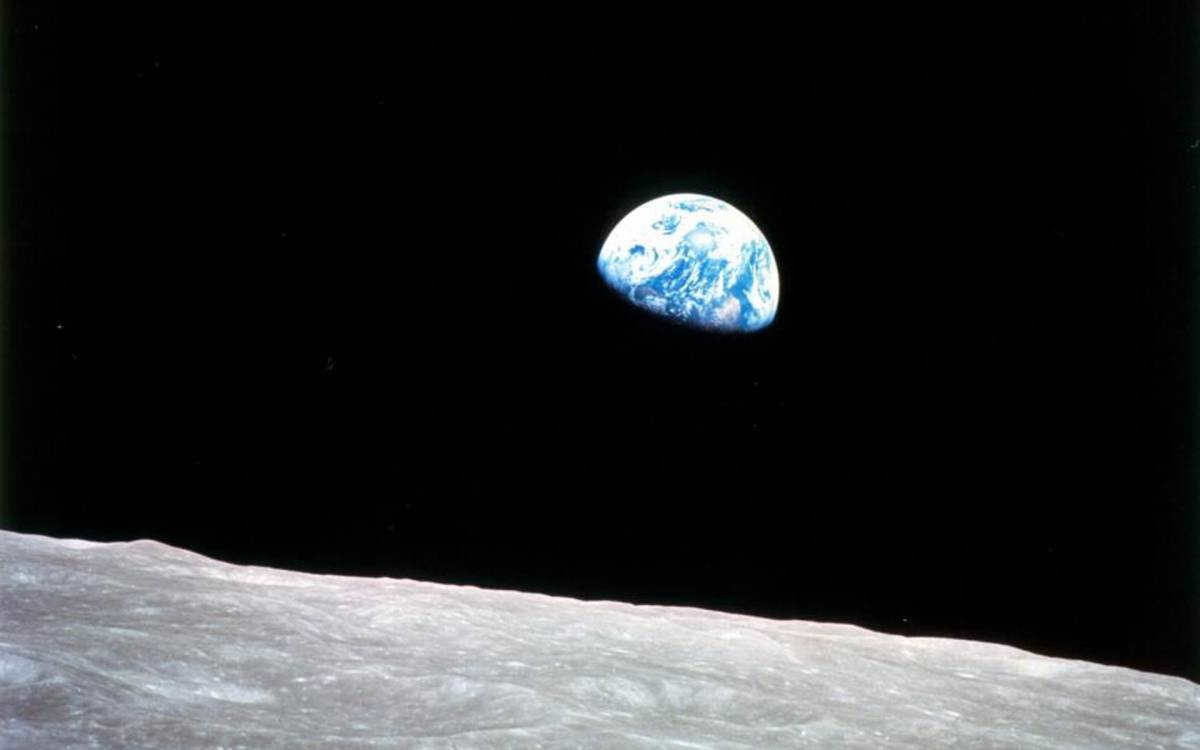
The Moon. The distance between Earth and the Moon is 384,467 kilometers
Let’s now compare all of these orbits to the distance between Earth and the Moon. The average distance to our only natural satellite is 384,467 kilometers. That’s approximately equivalent to 30 Earth diameters, nearly 10 geostationary orbits, or 925 ISS orbits.
However, this distance is comparable to the highest point of the orbit of the Russian space telescope Radioastron (also known as Spektr-R). At the time of its launch, the apogee of the telescope’s elliptical orbit was 333,455 km. Meanwhile, the perigee of the orbit was 600 km. For example, this is similar to the height of the low-Earth orbit of the American space telescope “Hubble” (569 km).
However, the orbit of the telescope is not stable. The gravity of our satellite has an impact on it. It is predicted that within 5 years, the Moon’s gravitational force will elevate the highest point of the telescope’s orbit to a distance of 390,000 km.
Similarly, the Moon’s orbit is not constant either. Our satellite is gradually moving away from the Earth at a rate of 4 centimeters per year. Some scientists speculate that eventually, the Moon will break free from the Earth’s gravitational pull and become an independent celestial body.
Nevertheless, until that happens, we remain hopeful that humanity will once again journey to the Moon, reaching the iconic distance of 384,467 kilometers.
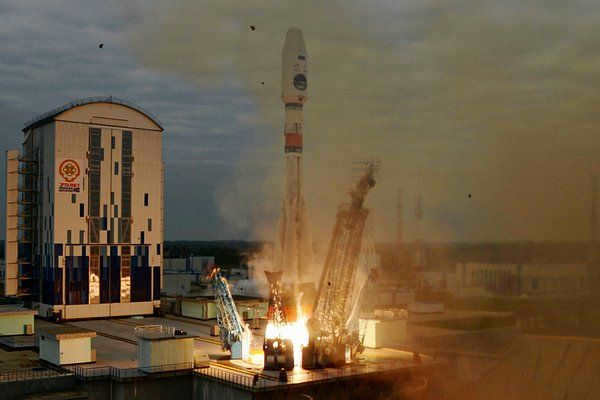
On August 11, the Vostochny Cosmodrome successfully launched Luna-25, an unmanned spacecraft, to conduct scientific research on the Moon’s South Pole. This historic mission marks the first-ever Russian attempt to explore this region. Luna-25 is expected to make a soft landing on August 21, 2023. In this article, we will delve into the uniqueness of this project, explore past lunar exploration endeavors, and speculate on the possibility of human colonization on the Moon in the near future.
What is the “Luna-25” mission?
The “Luna-25” mission refers to an automatic interplanetary station that is set to make history by landing at the South Pole of the Moon. Previous research expeditions have primarily focused on the equatorial zone of the Moon, but it has been discovered that the conditions at the poles differ significantly from the central regions.
This mission will be the first time in the history of space exploration that a spacecraft will venture to the polar region of the Moon, with a latitude similar to that of Norilsk on Earth.
The journey of “Luna-25” begins from Earth and continues to the Moon.
Once the spacecraft is launched into orbit by the Fregat upper stage, it will be directed towards the trajectory that leads to the Moon. This transition is expected to take approximately five days.
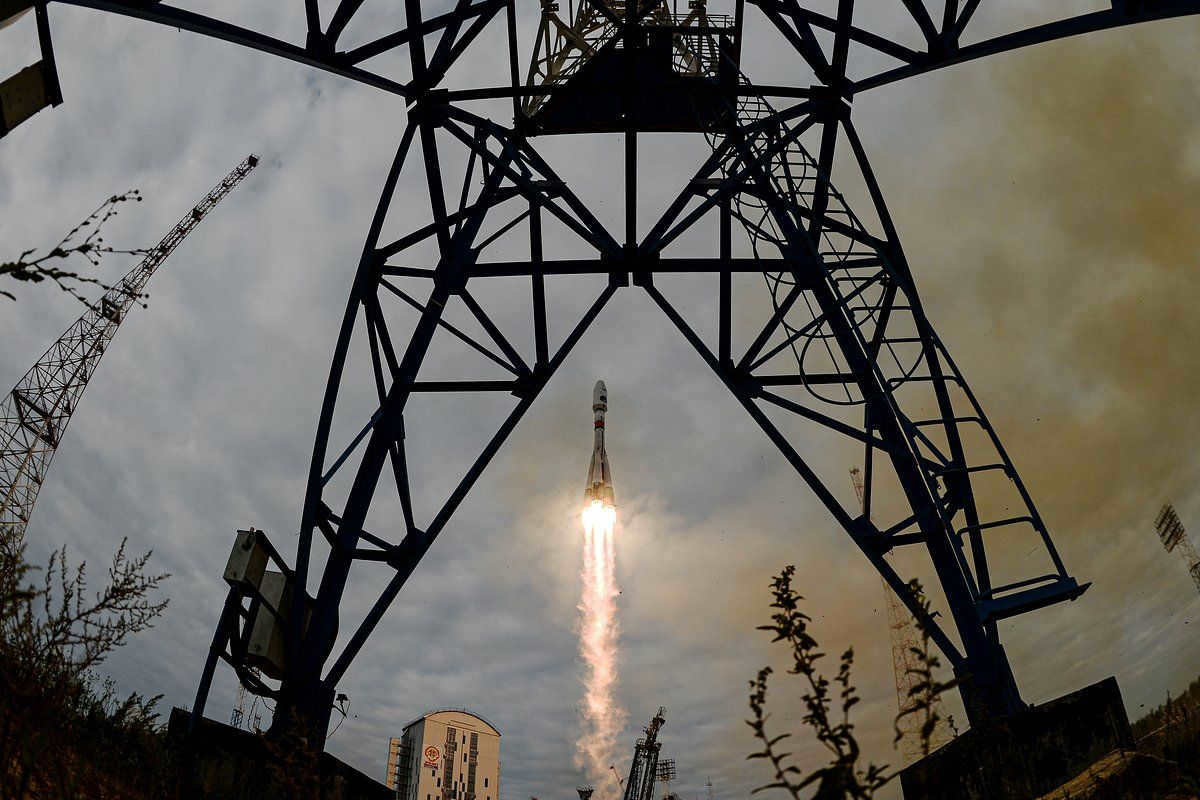
The lunar landing will be carried out in two stages – first, Luna-25 will enter the polar orbit of Earth’s satellite, and then transition to a lower pre-landing orbit. Only after completing these steps will the spacecraft proceed with the actual landing. This significant event is scheduled to occur on August 21.
Pavel Kazmerchuk, the chief designer of the project, revealed that numerous innovative solutions were incorporated into the development of the lunar station. One notable example is the implementation of advanced technologies for the electroerosion manufacturing of gear wheels used in the propulsion system.
Thanks to these advancements, the spacecraft was constructed with exceptional mass characteristics, making it remarkably lightweight while maintaining a long operational lifespan.
Unique technical features of “Luna-25”
The lunar mission “Luna-25” boasts an array of cutting-edge scientific equipment, each with its own specific purpose and capabilities.
Advanced laser mass spectrometer LAZMA-LR
One of the standout instruments on board is the high-tech laser mass spectrometer LAZMA-LR, designed to meticulously analyze the composition of the lunar surface’s upper layer. This groundbreaking instrument is particularly adept at detecting volatile compounds, making it an invaluable tool for lunar research.
ADRON-LR: Neutron and Gamma-Ray Detector
The ADRON-LR is essential for examining the composition of the topmost soil layers and measuring the proportion of water present on the lunar surface. To accomplish this, the technique of active neutron probing is employed, allowing for penetration to a depth of up to two meters.
LIS-TV-RPM infrared spectrometer
The LIS-TV-RPM infrared spectrometer is designed to examine the infrared spectroscopy methods in order to analyze the mineralogical composition of the lunar surface.
Dust Monitor PML
The Dust Monitor PML instrument is essential for conducting an experiment that aims to investigate the dust component of the Earth’s natural satellite’s exosphere, as well as the electrical fields surrounding the spacecraft.
The ARIES-L experiment will investigate ions and neutral particles in the lunar exosphere and examine the interaction between the satellite’s upper layers and the solar wind.
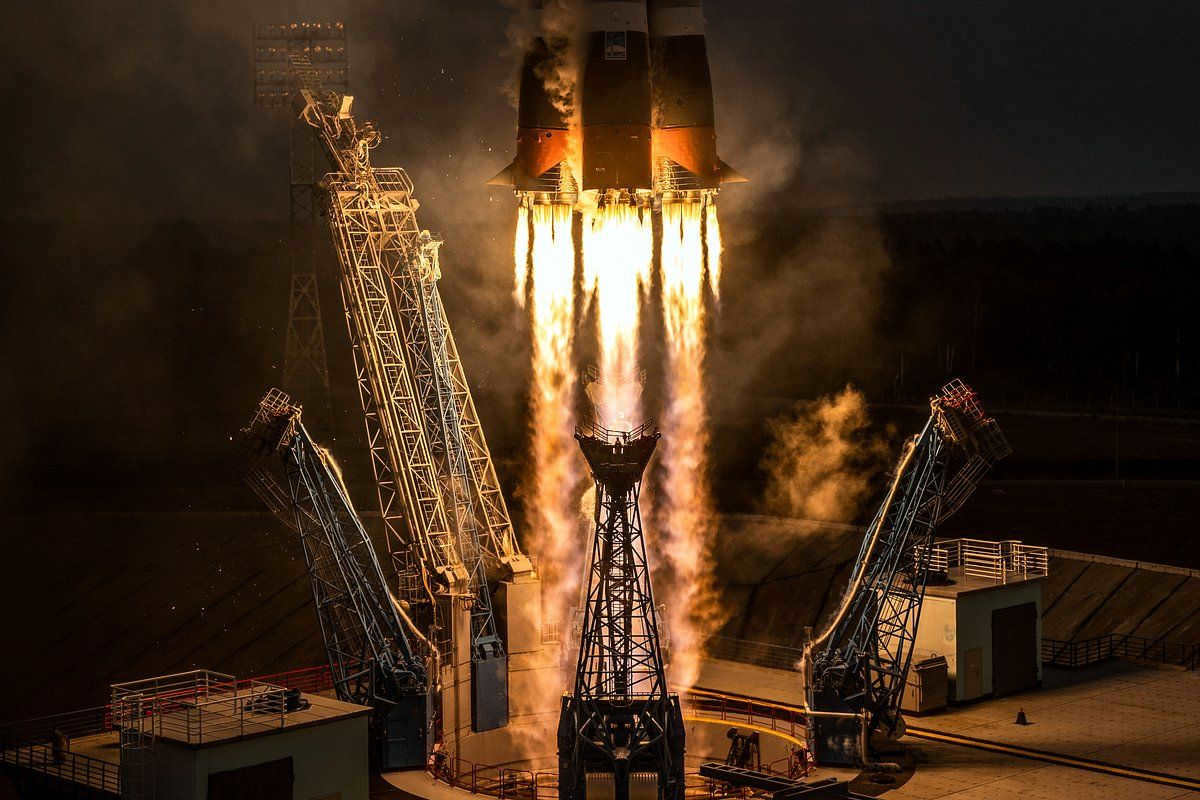
STS-L Television Service System
The STS-L system is essential for carrying out various functions, such as capturing images during the Luna-25 landing on the moon’s surface and providing cartographic, coordinate-based navigation for the spacecraft. Additionally, the STS-L will conduct panoramic imaging of the lunar horizon to establish the precise coordinates of the Luna-25 landing site.
Lunar Manipulator Complex LMK
The primary objective of the Lunar Manipulator Complex (LMK) is to collect lunar samples and transport them to the soil receiver cells of the LASMA-LR vehicle. Additionally, the manipulator complex is responsible for conducting research on the physical and mechanical properties of the lunar soil. It will also provide guidance for the LIS-TV-RPM, which will perform various measurements and surveys.
Equipped with a specialized manipulator arm, the complex is capable of collecting soil samples from depths ranging between 15 to 30 centimeters on the lunar surface. A total of up to 30 samples can be obtained from the satellite.
BUNI has been designed to ensure the operation of all scientific instruments, with the exception of STS-L. It handles various tasks such as power supply, control, reception, storage, and transmission of data from the equipment.
What challenges did the developers face?
Kazmerchuk emphasized that the development of Luna-25 had to consider strict weight limitations imposed on the station.
Weight is a highly valuable resource in space. Due to these strict restrictions, the volume of the tank had to be fixed, leaving no room for additional fuel. As a result, we had to reduce the mass of the remaining structure and instruments.
The mass of the scientific equipment on the station eventually amounted to 20 kilograms, while the total weight of Luna-25 was 1605 kilograms, with 1000 kilograms dedicated to fuel.
According to the Semyon Lavochkin Research and Production Association (NPO), the developer of the station, the chances of the mission being successful are estimated to be at least 80 percent.

What is the history of lunar exploration?
On January 2, 1959, the first Soviet probe was launched towards the Moon, but unfortunately, it missed its target due to a calculation error. However, in September of the same year, the Luna-2 spacecraft successfully completed its mission by making a hard landing on the lunar surface and leaving behind Soviet symbols. Interestingly, these symbols can still be found on the Moon today.
In October 1959, the next spacecraft called “Luna-3” took pictures of the far side of the Moon. Then, in 1966, “Luna-9” achieved a significant milestone by making a soft landing on the lunar surface, allowing scientists to obtain the first panoramic images of the Moon.
The final Soviet mission to the Moon, known as Luna-24, was successfully launched in 1976. During this mission, researchers were able to obtain a sample of lunar soil, and upon analyzing the results, they obtained the first compelling evidence of water’s existence on the Moon. Spectroscopic data revealed that the soil sample contained 0.1 percent water. However, these findings were largely disregarded in the Western scientific community, as there were concerns that the samples may have been contaminated by Earth’s atmosphere. Consequently, Soviet efforts to further study the Moon came to a halt.
Following its mission, the Luna-24 spacecraft safely returned to Earth.
However, in 2010, the situation took a turn – the instrument belonging to the Space Research Institute of the Russian Academy of Sciences, which was installed on the American lunar station, provided confirmation of the existence of a significant quantity of water ice on the surface of Earth’s satellite. It was later discovered that the ice is particularly abundant at the Moon’s poles, indicating that there is no need to transport water from Earth for astronaut and technical requirements; it can be extracted directly from lunar bases.
This finding also resolves the issue of astronaut respiration, as water can be separated into hydrogen and oxygen. Hydrogen can then be utilized as rocket fuel or to generate electricity.
Therefore, once in position, the new “Luna-25” station will spend approximately a year searching for water and minerals on the Moon.
Nathan Eismont, a renowned scientist at the Space Research Institute of the Russian Academy of Sciences, has stated during an interview with “Lenta.ru” that the key to finding water on the Moon lies in knowing where to search.
We are aware of the prime locations for exploration – the circumpolar regions of the Moon. These regions are advantageous because the sun’s angle is low above the horizon, preventing it from illuminating the craters caused by asteroid impacts. Therefore, if water is present there, it likely exists in the form of ice, given the extremely cold temperature of approximately minus 150 degrees Celsius.
The expert further elaborated that past missions have failed to provide definitive answers to many inquiries, which the upcoming “Luna-25” endeavor aims to resolve.
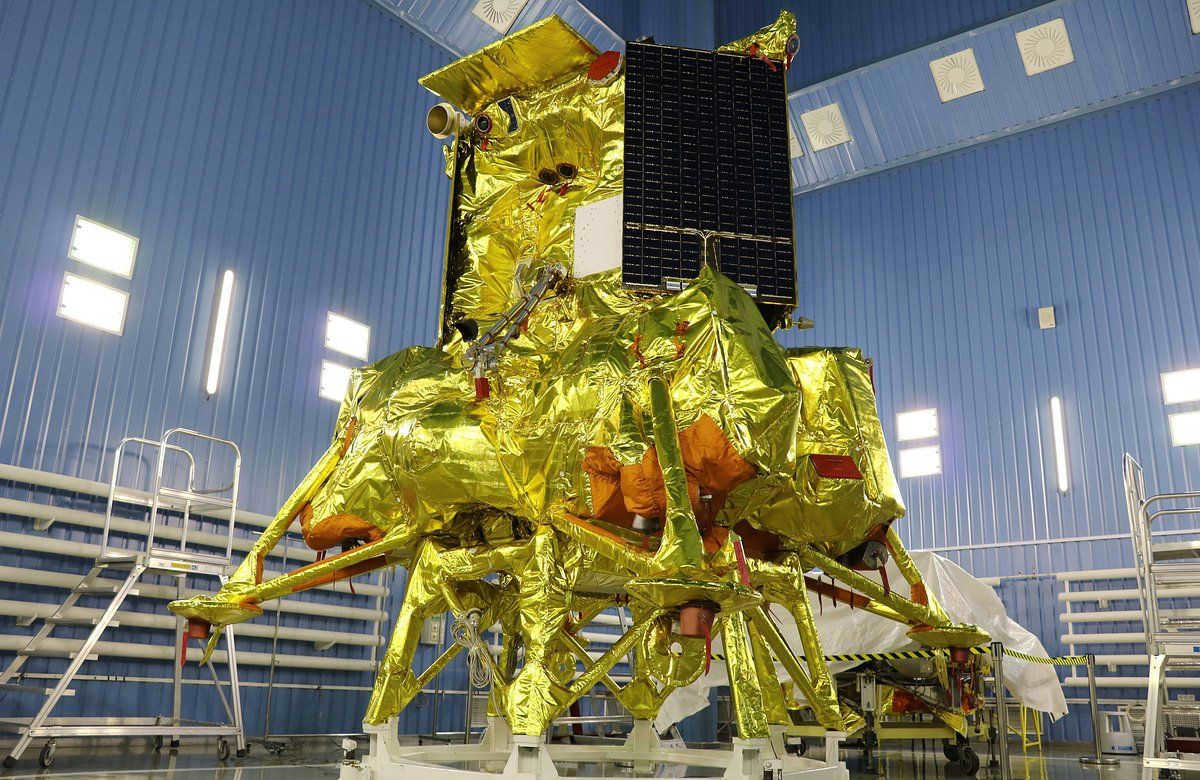
“What was the process of the Earth-Moon system’s evolution? How did water come to exist on both the Earth and the Moon? These questions remain unanswered. The prevailing theory suggests that comets brought water to both celestial bodies. During a period known as the “bombardment,” after the Earth and the Moon formed, they were frequently struck by asteroids and comets,” Eismont explained.
Furthermore, apart from water, the upper layers of the lunar soil contain an abundance of volatile compounds comprising intricate molecules that were transported to the Moon by comets. Given the frigid conditions at the poles of the Earth’s satellite, akin to the Earth’s poles, layers of cosmic frost have amassed and persisted here for millions of years. Analyzing these “icy archives” provides insights into the evolution of the entire solar system since its inception.
It should be noted that while the Earth is undoubtedly abundant in natural resources, the reserves of numerous crucial substances and elements on our planet are exceedingly limited. For instance, platinum group metals and rare earth metals, both of which are vital components within the electronics industry, are in short supply. Over time, Earth’s available stores are gradually diminishing, and this predicament could potentially be resolved through lunar exploration.
At present, the Chinese are the primary suppliers of these rare-earth materials to the global market. We do not currently engage in mining these resources ourselves, as it is more cost-effective to purchase them from China, despite the possibility of mining them in Russia. However, regardless of the scenario, the Earth’s reserves will eventually be depleted.
The expert also discussed another important role that the Luna-25 mission can fulfill, which is to serve as preparation for a future human mission to Mars. “With current technologies, it takes eight months to travel to Mars with the available fuel consumption. Once we arrive, we would then have to wait for the next opportunity to return, which would take about six months. And then, the return journey would also take another eight months. As you can see, it would be a very lengthy expedition. And if something were to go wrong along the way, it would be impossible to rescue the astronauts,” Eismont emphasized.
In contrast, the journey to the Moon can be completed in just three days, making it much faster. Currently, it will take us five days to orbit the Moon, and the overall mission duration will be ten days. So there is a significant difference in terms of travel time between going to the Moon and going to Mars. However, many of the technologies required for a Mars mission can be tested and practiced on the Moon as well.
According to the expert, the Moon serves as a perfect testing ground for practicing Mars exploration.
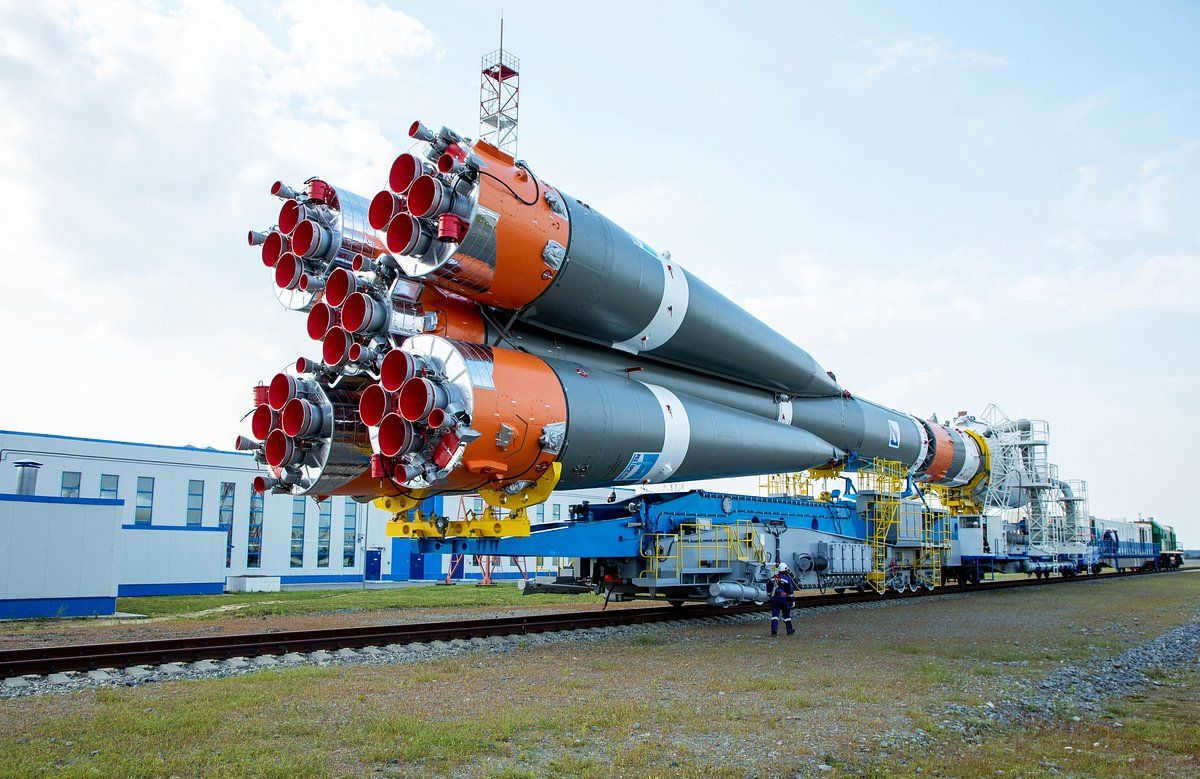
Why is it premature to envision a future on the Moon?
Currently, the plan is to establish a lunar base for the purpose of servicing robots that will mine rare-earth metals. In an ideal scenario, expeditions to the Moon will become as routine as trips to the International Space Station or even to Antarctica. However, it is premature to consider the Moon as a potential new home for human beings.
In order for humans to permanently reside on the Moon, a multitude of challenges must be overcome, in addition to the absence of atmosphere and the effects of low gravity.
What are the obstacles that prevent us from “moving” to the Moon:
- Lunar dust – it resembles shards of glass with high penetration capability and sharp edges. This type of dust can easily cause cuts and harm the respiratory system, even penetrating through a tightly sealed spacesuit;
- Radiation – the Moon is exposed to highly aggressive cosmic radiation, making it necessary to bury scientific bases underground in order to protect against it. However, living permanently in a cave is not an appealing option for most people.
According to Yuri Borisov, the CEO of Roscosmos, the lunar program will continue with the upcoming projects Luna-26, Luna-27, and Luna-28. These missions are scheduled to be launched in the late 2020s. The primary goal of these new “Lunas” is to assist scientists in identifying a suitable location for the construction of a joint Russian-Chinese space station.
Furthermore, Nathan Eismont mentioned that there are future plans to establish long-term human settlements on the lunar surface. These settlements would be akin to villages and are not mere speculation but concrete plans within a real program. The forthcoming Luna-25 mission to the south polar region is a significant step towards achieving this objective.
In 2021, the European Space Agency (ESA), the Massachusetts Institute of Technology (MIT), and the architectural agency SOM put forward a similar idea. They came up with a plan for the Lunar Village located at the South Pole of the moon. The vision of the creators involves the use of futuristic residential modules and support infrastructure for the buildings in the village.
Eismont emphasized that the project “Luna-25” is not an individual endeavor, but rather a component of a comprehensive program that must be rational in all aspects, including managing increasing risks or maintaining risks at an acceptable level. “‘Luna-25’, in my view, represents a highly favorable compromise, as it is a cost-effective mission that also pursues ambitious scientific objectives. Therefore, if we are able to progress effectively, it will serve as a strong justification for continuing our program,” stated the interviewee from “Lenta.ru”.
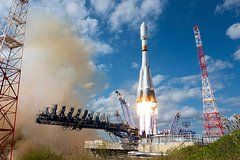
At 02:11 Moscow time on Friday, August 11, a Soyuz-2.1b rocket carrying the Luna-25 Automated Interplanetary Station (AIS) embarked on its historic scientific mission to the Moon. This marks the first ever scientific mission to Earth’s natural satellite by modern Russia. The launch took place from the 1C pad complex at the Vostochny Cosmodrome.
As part of the planned mission, the station will travel to the Moon over a period of up to 5.5 days, making two course corrections along the way. After the first correction, the AMS will enter a near-polar orbit at an altitude of 100 kilometers. It will operate from this orbit for 3 to 7 days, scouting for a suitable landing site. The second correction will then bring the AMS into a landing orbit, with a minimum distance of 18 kilometers from the Moon’s surface.
The Soviet Union Successfully Sent an Automated Lunar Lander to the Moon Approximately Fifty Years Ago
One of the primary objectives of the inaugural Russian mission to Earth’s natural satellite was to test the technology required for a gentle landing on the surface of another celestial body. The planned landing site for the lander was the Boguslavsky crater located near the southern pole of the Moon, an area believed to potentially contain significant deposits of water ice. Once landed, the lander would then proceed to conduct comprehensive research on the properties, composition, and mechanical characteristics of the polar soil.
The name chosen for the automated lunar lander, the AMS, serves to highlight the connection and continuation with the lunar program of the Soviet Union.
The previous Soviet mission, known as Luna-24, took place in August 1976 and successfully returned samples of lunar soil to Earth from the satellite.
The Luna-25 descent vehicle is equipped with a manipulator arm
The Luna-25 station, which weighs 1605 kilograms, is launched with 1000 kilograms of fuel and 20 kilograms of scientific equipment.
One of the primary scientific tools on board the Luna-25 is the manipulator arm, which will be utilized to transport lunar soil samples to the instrument for analyzing the chemical, elemental, and isotopic composition of the regolith.
The sampling procedure will be conducted at a depth of 15-30 centimeters, with an estimated collection of up to 30 samples, each measuring 2 cubic centimeters.
Additional instruments include a neutron and gamma ray detector, which will investigate the lunar soil at depths of up to 60 centimeters, and an energy mass spectrometer designed to examine the outer region of the Moon’s upper atmosphere.
Russia plans to launch two additional lunar missions in the coming years
According to a scientific report from the Space Research Institute of the Russian Academy of Sciences, the Luna-27 mission is expected to land closer to the South Pole of the moon than its predecessor, Luna-25, which will touch down near the 70 degrees south latitude parallel.
This will be preceded by the Luna-26 program, which aims to study the moon from space.
Following Luna-26 and Luna-27, Russian scientists intend to send the Luna-28 spacecraft to collect samples of lunar soil and bring them back to Earth.
The launch of missions “Luna-26” and “Luna-27” is currently planned for the years 2027-2028, and their success hinges on various factors, including the successful execution of the “Luna-28” program. Additionally, under the Luna-29 mission, Russia intends to send a planetoid to the Earth’s moon.
China, the United States, and India are actively conducting studies on the Moon
At present, China is leading the way in lunar research, with a rover exploring the far side of Earth’s natural satellite. China’s lunar program is set to reach its peak with the establishment of the International Lunar Research Station (ILRS) in the 2030s.
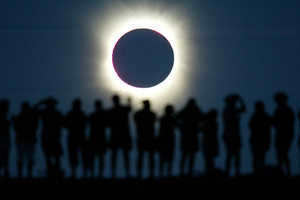
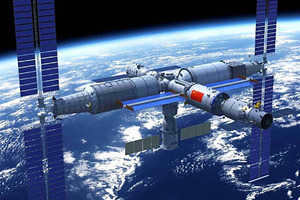
India is also attempting a second soft-landing of its vehicle on the Moon’s surface, after sending the Chandrayaan-3 mission with a landing module and rover on July 14. Experts predict that despite being launched later, the Russian mission is expected to land on the Moon before the Indian mission.
Western countries have the most ambitious plans for lunar exploration.
In the 2020s, the United States and its partners are planning to send a manned spacecraft around the Moon as part of the Artemis program. They are also aiming to land a human on the Moon as early as the next decade.





